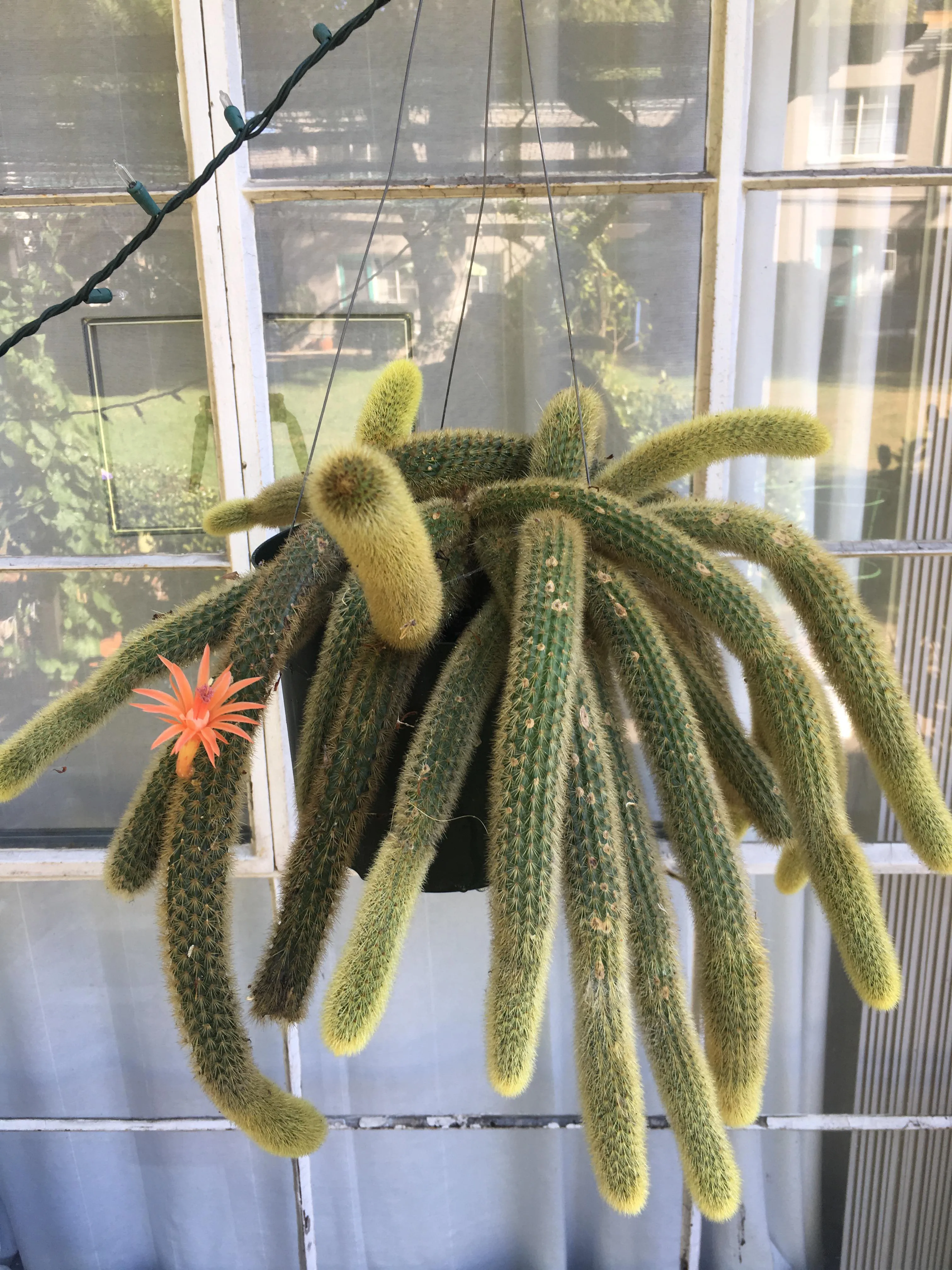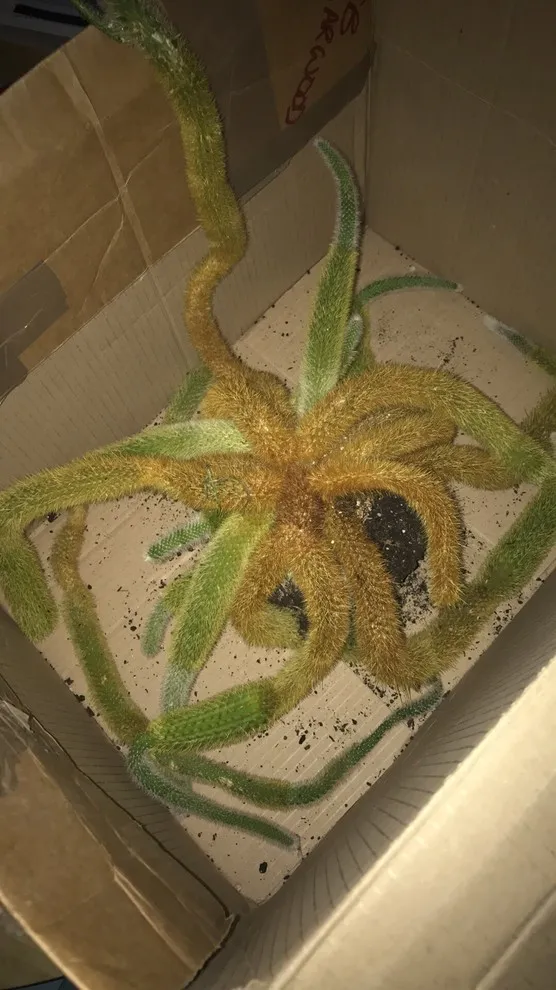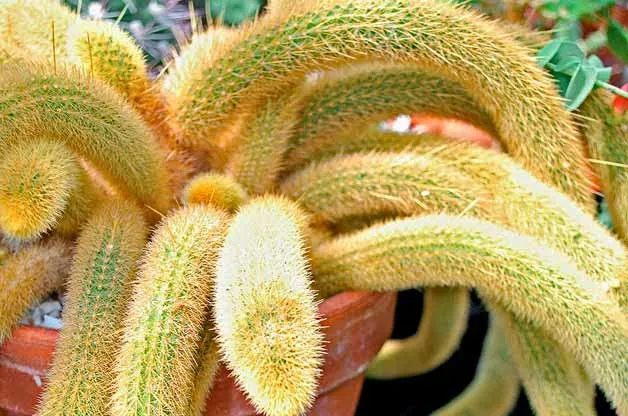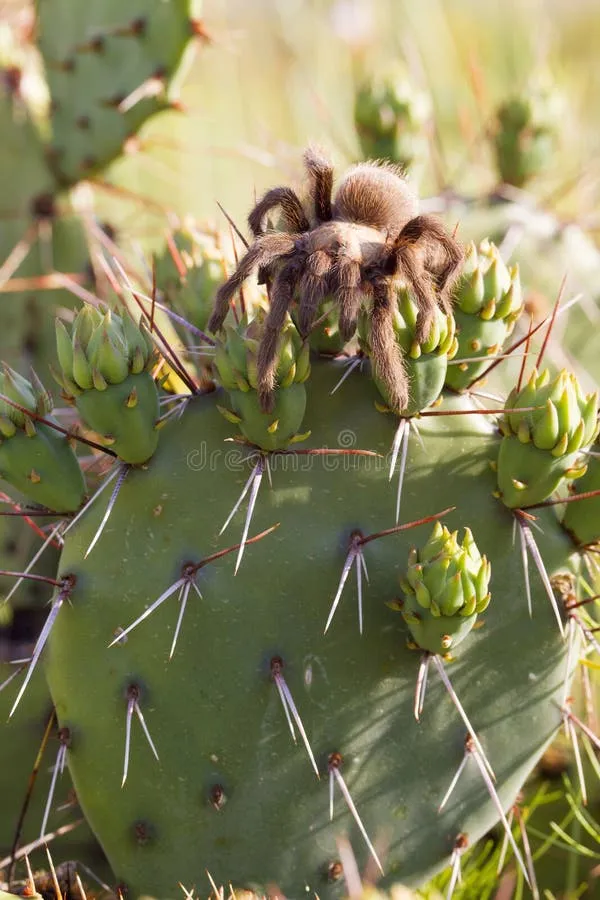What is a Cactus Tarantula?
The term “Cactus Tarantula” commonly refers to a group of tarantula species that are found in arid and semi-arid environments, particularly in the southwestern United States and parts of Mexico. These fascinating creatures are not a distinct species, but rather a colloquial name used to describe tarantulas adapted to desert habitats. They are well-suited to survive in harsh conditions, exhibiting unique behaviors and adaptations to thrive where others struggle. Understanding these magnificent arachnids involves appreciating their resilience and their role in their ecosystem. They are a marvel of nature and a popular species among tarantula enthusiasts.
Appearance and Identification
Identifying a Cactus Tarantula can be tricky as various species share similar characteristics. Generally, they are large, hairy spiders, with body lengths ranging from 2 to 4 inches, not including their leg span, which can extend to 5-7 inches or more. Their coloration varies, with shades of brown, tan, and sometimes reddish hues, allowing them to blend seamlessly with their surroundings. The presence of urticating hairs, tiny barbs on their abdomen that they kick off as a defense mechanism, is another characteristic. When trying to identify a specific species, it is crucial to consult with a field guide or an expert, as subtle differences in size, color patterns, and habitat preference are key to accurate identification.
Where do Cactus Tarantulas Live?

These spiders are most frequently found in the arid and semi-arid regions of the southwestern United States and northern Mexico. These areas provide the warm, dry conditions the spiders need to survive, and they are particularly well-suited for this type of climate. They often make their homes in burrows in the ground, sometimes under rocks or near the base of cacti or other vegetation. Their range extends across states like Arizona, New Mexico, Texas, and California, as well as into the adjacent areas of Mexico, where they can be found in various desert landscapes.
Habitat and Geographic Range
The ideal habitat for a Cactus Tarantula is characterized by hot, dry conditions with minimal rainfall. They prefer areas with sandy or loamy soil, which is easier for them to burrow into. The presence of rocks, cacti, and other desert plants provides shelter from the sun and predators. These tarantulas are most active during the evening and nighttime hours, as they avoid the extreme heat of the day. Their geographic range is largely dictated by climate, with most populations concentrated in the Sonoran and Chihuahuan Deserts, where they have adapted to the environmental challenges, making them a staple of these ecosystems.
The Cactus Tarantula’s Diet
As carnivores, Cactus Tarantulas primarily feed on insects and other invertebrates they can capture. Their diet is influenced by what is available in their environment, but common prey items include crickets, grasshoppers, beetles, and even smaller spiders. They are ambush predators, patiently waiting in their burrows or near their entrances until prey wanders within striking distance. The tarantula then swiftly pounces on its target, injecting venom to paralyze it before consuming it. The tarantula’s feeding habits are a crucial aspect of its survival, as they need to consume a substantial amount of food to maintain energy levels and grow, especially during molting periods.
What Do They Eat in the Wild?

In their natural habitat, Cactus Tarantulas are opportunistic feeders, adapting their diet to the available food sources. Their diet typically consists of a variety of insects and other arthropods, reflecting what is most abundant in their environment. Common food sources include crickets, beetles, moths, and occasionally other small spiders. They will also eat other invertebrates if the opportunity arises. They play an important role in the desert ecosystem, helping to control the populations of these invertebrates. The tarantulas’ ability to adapt to their surroundings, in terms of their diet, is a key factor in their survival.
How to Feed a Cactus Tarantula in Captivity?
When kept in captivity, Cactus Tarantulas require a carefully managed diet to stay healthy. They should be fed live insects, such as crickets, mealworms, and roaches, purchased from a reputable source. The frequency of feeding depends on the tarantula’s age and size, but generally, adults can be fed once or twice a week, while younger spiders may require more frequent feedings. The size of the prey should be appropriate for the tarantula; it should be no larger than the tarantula’s abdomen. Leftover food should be removed to prevent stress to the tarantula. Also, fresh water should always be available. Supplementing the diet with calcium and vitamins is not usually required, but can be beneficial during growth.
Cactus Tarantula Behavior and Temperament
Cactus Tarantulas are generally not aggressive and tend to be docile, preferring to avoid confrontation. They are typically nocturnal, emerging from their burrows during the evening and nighttime to hunt or mate. These spiders have specific behaviors based on their stage of life, such as molting. They are ambush predators, patiently waiting for prey to come within striking distance, and they are very efficient hunters. Males and females also display distinct behaviors during mating season, with males often displaying elaborate courtship rituals. Overall, the behavior of Cactus Tarantulas reflects a natural adaptation to their environment, making them fascinating creatures to observe and study.
Unique Defensive Mechanisms

Cactus Tarantulas have evolved several unique defensive mechanisms to protect themselves from predators. The most notable is their ability to flick urticating hairs (small barbs) from their abdomen toward a threat. These hairs cause intense irritation and itching upon contact, deterring potential predators. They also possess strong fangs, which they use to inject venom. In addition, they can exhibit a defensive posture, rearing up on their hind legs and displaying their fangs as a warning. They can also retreat to their burrows or hide under rocks. These defense mechanisms are very effective at protecting the tarantula in the wild, showcasing their resilience and adaptation.
How to Care for a Cactus Tarantula
Caring for a Cactus Tarantula involves replicating their natural habitat as closely as possible. Proper enclosure setup, temperature, and humidity control are crucial for the tarantula’s well-being. The enclosure should be secure, with appropriate substrate for burrowing, such as a mix of coco fiber and peat moss. Regular feeding with live insects and the availability of fresh water are essential. It is important to handle the tarantula with care to avoid injury. Furthermore, it’s crucial to research the specific needs of the species. With these conditions met, Cactus Tarantulas can thrive in captivity, providing a rewarding experience for tarantula enthusiasts.
Creating the Ideal Enclosure
Creating an ideal enclosure for a Cactus Tarantula involves several key considerations. The enclosure should be appropriately sized to accommodate the spider’s size and provide enough space for it to move and create a burrow. A 10-gallon tank is sufficient for juveniles, while larger adults may require a 20-gallon or larger tank. The substrate is an essential component, allowing the tarantula to burrow and feel secure. A mix of coco fiber, peat moss, and a bit of sand provides a naturalistic environment. Provide a hide, such as a piece of cork bark or a half-log, for the tarantula to retreat to. The enclosure should be well-ventilated, and a shallow water dish should always be available. Maintaining the right environment is critical for the tarantula’s health.
Temperature and Humidity Requirements

Cactus Tarantulas thrive in a warm and dry environment, mirroring their natural habitat. Maintaining the appropriate temperature and humidity levels is vital for their health. The ideal temperature range is between 75-85°F (24-29°C), which can be achieved using a heat mat or a heat lamp positioned above the enclosure. Humidity levels should be kept relatively low, around 40-60%, to prevent fungal growth. While a hygrometer is an excellent tool to monitor humidity, occasional light misting is sufficient. Proper ventilation is also important to prevent excess humidity build-up. Regular monitoring and adjustment of these conditions will ensure a suitable environment.
Common Health Issues and Prevention
Cactus Tarantulas are generally hardy creatures, but they are still susceptible to certain health issues. Preventative measures, such as proper care, are key to avoiding these issues. One common problem is dehydration, which can be avoided by ensuring access to fresh water at all times. Fungal infections can occur if the enclosure is too humid or the substrate is not clean. Regular cleaning and maintenance of the enclosure, along with the right temperature and humidity levels, are crucial for prevention. During molting, the tarantula is particularly vulnerable; avoid disturbing the spider. Always quarantine new tarantulas and observe them for any signs of illness. Consulting with an experienced tarantula keeper or a veterinarian specializing in exotic animals is always recommended.
Interesting Facts About Cactus Tarantulas
Cactus Tarantulas have many fascinating aspects that make them a popular subject of study and fascination. Their lifespan can be remarkably long, with females living for up to 25 years or more, while males typically have shorter lifespans. They are important predators in their ecosystem, helping to control insect populations. Their molting process is a remarkable event, where they shed their exoskeleton to grow. The molted exoskeleton can sometimes be found in their burrows and provides a glimpse into their size and development. They display diverse behaviors, and their adaptations to the desert environment are a testament to their resilience. They are truly remarkable creatures.
